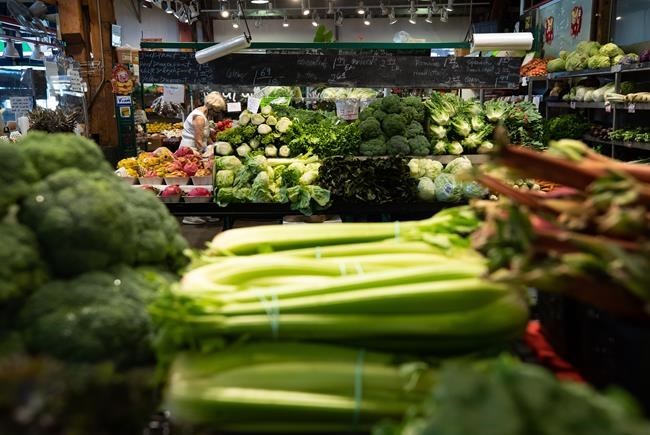Shea McInnis used to love cooking.
But higher prices have reduced the PhD student to basic meal planning on a shoestring budget.
“Now it’s just about what nutrition I can produce with the dollars I have,” said McInnes, who attends Saint Mary’s University in Halifax. “I make a lot of decisions based on whether there’s a sale. The enjoyment and delight are gone.”
Food inflation remains stubbornly high in sa国际传媒 as grocery prices climbed at the fastest pace in more than four decades last month.
While overall inflation moderated in August, the cost of food purchased from stores was up a staggering 10.8 per cent compared with a year ago.
That's the fastest clip recorded by Statistics sa国际传媒 since 1981.
Higher prices swept nearly every aisle of the grocery store.
Even items once considered cheaper substitutes for pricier products weren't immune to inflation.
For example, frozen and dried vegetables — usually considered a budget-friendly option — jumped 14.1 per cent last month compared with a year ago while fresh vegetables rose a more modest 9.3 per cent.
A similar trend appeared to unfold in the meat department.
"A few months ago when beef and pork prices were increasing significantly you could substitute for chicken," said James Orlando, director at TD Economics.
"Now the opposite is happening where beef and pork price inflation is decelerating and chicken prices are increasing."
Several basic food staples also posted significantly higher prices.
Flour prices were up 23.5 per cent in August compared with the same month last year, pasta prices were up 20.7 per cent, bread 17.6 per cent, eggs 10.9 per cent, fresh fruit 13.2 per cent and fats and oils 27.7 per cent.
Even the simple potato pulled off double digit price gains.
Sustained higher prices are prompting Canadians to adopt new shopping habits to save money, a new survey released Tuesday said.
The survey found Canadian consumers are shopping more at discount stores, buying cheaper store brands, using loyalty programs and scouring weekly flyers for deals.
"Food inflation is lingering and is really starting to shape where and how people buy food," said Sylvain Charlebois, professor of food distribution and policy at Dalhousie University and director of the Agri-Food Analytics Lab, which conducted the survey along with Caddle, an online data platform.
The survey also found nearly a quarter of Canadians have cut back on the amount of food they purchased within the last year because of high grocery prices.
"Some people are actually buying less food," Charlebois said. "There are dietary compromises being made by many Canadians."
In an effort to save money, McInnis said he's cut back on both treats and healthy foods.
“I used to really enjoy going to the bakery section and buying some cookies or a cake for a treat,” he said. “But now that I'm trying to get as much mileage as I can out of my money I’ve cut that out.”
He’s also stopped eating as much salad. The rising cost of vegetables and the risk of spoilage with fresh foods makes it’s not even worth it, he said.
“I’ve definitely made sacrifices at the grocery store to try to save money,” McInnes said.
Some relief from soaring food prices could be in store as easing input costs reduce pressure on food prices.
"With transportation costs and agricultural commodity prices now off their peaks, the trend in food price inflation should start to soften towards the end of this year and into 2023," Andrew Grantham, senior economist at CIBC Capital Markets, said in a client note.
Michael Medline, president and CEO of Sobeys Inc., said last week grocery store inflation may have peaked in sa国际传媒 as price increases from food manufacturers stabilize.
The number and rate of cost increases being passed along to the grocery chain from food suppliers began decreasing in recent weeks, he said during an earnings call.
Grocers have been widely criticized for high food prices and posting strong earnings throughout the pandemic.
But Michelle Wasylyshen, a spokeswoman with the Retail Council of sa国际传媒, said grocers aren't to blame.
Instead, she said supply chain disruptions, extreme weather events and the invasion of Ukraine have all pushed up costs for farmers and importers.
They've in turn raised prices for food manufacturers, processors and wholesalers, who pass those price increases to grocers.
This report by The Canadian Press was first published Sept. 20, 2022.
Brett Bundale, The Canadian Press



